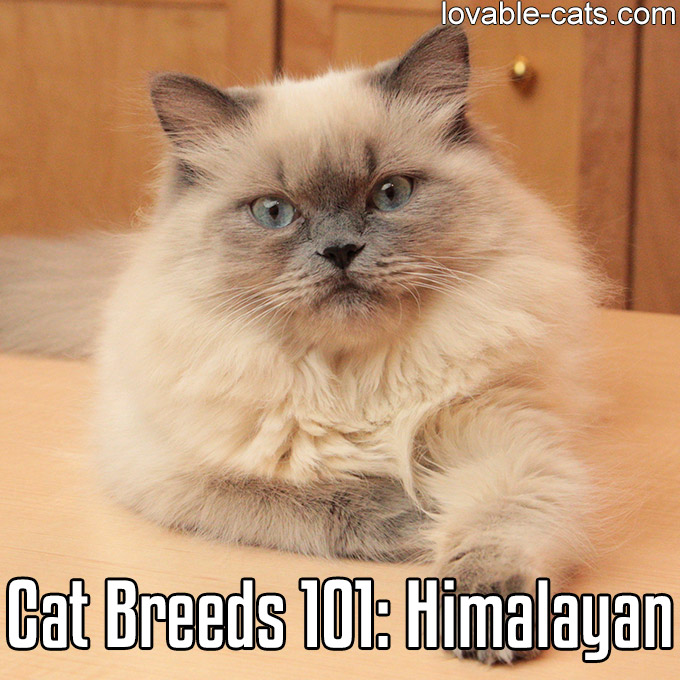
Cat Breeds 101: Himalayan – Image To Repin / Share
Photo: Wikipedia – lic. under CC 3.0
When writing about the Himalayan cat, it’s tempting to say, “see Persian” because the fact is, the Himalayan is really a Persian cat with a colorpoint pattern. It bears mentioning, though, that among all Persian varieties, the Himalayan is the most popular, thanks to its coloring that is reminiscent of the regal Siamese.
This comes as no surprise – since the Himalayan is, in fact, a hybrid of the Persian and the Siamese. Some say this mix not only gave the Himalayan the Siamese’s color pattern but also some of the Siamese’s personality. Although this breed is largely docile and sedate, it is somewhat more sociable and playful than the average Persian, perhaps because some Siamese blood runs through its veins. [1]
Fortunately, the Himalayan did not inherit the Siamese’s voice as well. Should your Himalayan ever miss your company too much, it will let you know with a quiet meow rather than an ear-piercing screech. That is one more reason why it is such a popular domestic cat. [2]
The Himalayan’s gentleness makes it a good family cat. But the family must be willing to keep up on its care. The Himalayan, you see, is one of the highest-maintenance cats you can find! Weekly brushings are out of the question – either you comb your Himalayan every day or you end up with impossibly matted hair.
Your cat will inevitably try to help out in its grooming by licking its fur, but that will only cause another problem that is much more serious than hair mats: gastrointestinal hairballs. If your cat does not properly excrete these boluses, they can block up the intestines and cause serious distress. Constant combing and brushing will minimize hairballs, but if they occur nonetheless, adding petroleum jelly to your Himalayan’s food can help your pet to vomit or excrete the bolus more easily. [3]
Of course, everyday combing is routine for all owners of long-haired cats. What is unusual is the daily face washing that you need to do for the Himalayan (and the Persian). That’s because the Himalayan’s characteristic flat face makes its eyes water excessively. If you Don’t wash these tears away regularly, they will cause stains on your cat’s face.
Aside from needing a time-consuming daily grooming ritual, the Himalayan can also be prone to polycystic kidney disease and respiratory problems. A DNA test or ultrasound can help determine the former. The latter can be prevented by exercise and proper diet. It also helps to keep your Himalayan in a cold environment to prevent overheating and the resulting respiratory distress. [4]
Undoubtedly, the Himalayan is far from being the easiest kitty to take care of. But this cat repays you with loyal affection and a respect for your private time, which not many other cats will grant. [2] For many, these traits of the Himalayan make all the trouble of caring for them worthwhile. And that is why the Himalayan is the most popular household cat in the United States today.
References:
[1] Himalayan Cat. Petfinder. https://www.petfinder.com/cat-breeds/Himalayan
[2] Himalayan. The International Cat Association. https://www.tica.org/introduction/item/214
[3] How Effective Is Vaseline (Petroleum Jelly) for Cats’ Hairballs? Vetinfo. https://www.vetinfo.com/how-effective-is-vaseline-petroleum-jelly-for-cats-hairballs.html
[4] What You Need to Know About Himalayan Health. Vetstreet. https://www.vetstreet.com/cats/himalayan#health
